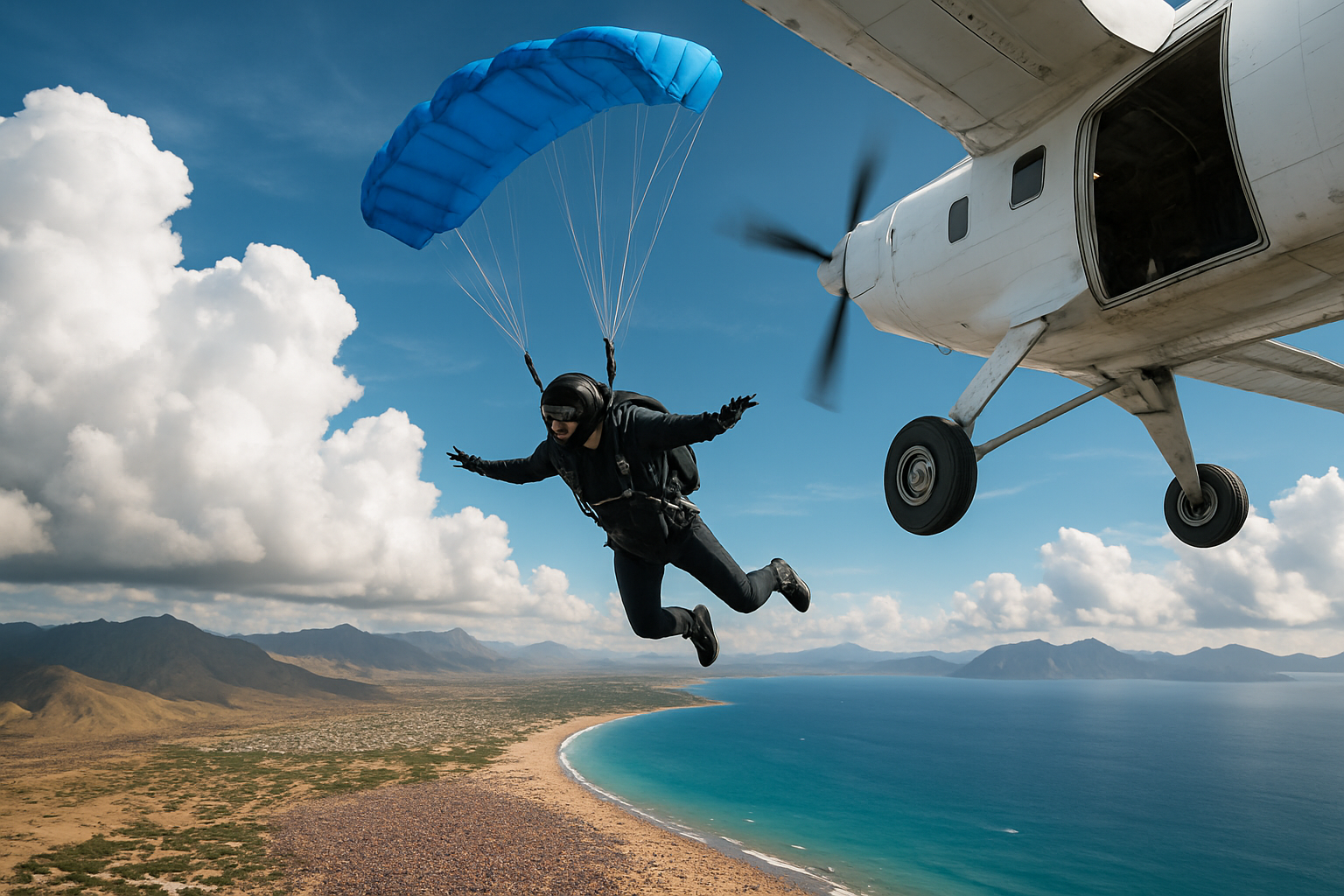Skydiving Tourism: Leaping into a New Era of Adventure Travel
The adrenaline-pumping world of skydiving is no longer confined to thrill-seekers and daredevils. A new trend is emerging in the travel industry, transforming this extreme sport into a sought-after tourist experience. Skydiving tourism is taking flight, offering travelers a unique way to explore destinations from a bird's-eye view. This innovative approach to sightseeing combines the rush of freefall with breathtaking panoramas, creating unforgettable memories for adventurers of all backgrounds.

Destination Skydiving: A New Perspective on Travel
Skydiving tourism offers a fresh perspective on familiar landscapes. Imagine freefalling over the Swiss Alps, gliding past the iconic Sydney Opera House, or descending towards the lush forests of Costa Rica. This aerial approach to sightseeing provides an unparalleled view of natural wonders and urban landscapes alike. Tour operators are capitalizing on this unique selling point, crafting packages that combine skydiving with traditional tourism activities for a well-rounded travel experience.
The Psychology of Extreme Tourism
The rise of skydiving tourism taps into a growing desire for transformative experiences. Psychologists suggest that engaging in extreme activities like skydiving can lead to increased self-confidence and a sense of accomplishment. For many travelers, conquering the fear of jumping from a plane becomes a metaphor for overcoming personal challenges. This psychological aspect adds depth to the skydiving tourism experience, making it more than just a momentary thrill.
Technology and Safety Advancements
Technological advancements have played a crucial role in making skydiving more accessible to tourists. Modern equipment, including automatic activation devices and precision landing systems, has significantly improved safety standards. Virtual reality simulations now allow first-time jumpers to familiarize themselves with the experience before taking the leap. These innovations have helped alleviate concerns and opened the door for a broader range of participants in skydiving tourism.
Environmental and Economic Impact
The growth of skydiving tourism has both positive and negative implications for destinations. On one hand, it provides a new revenue stream for local economies, creating jobs and attracting high-spending tourists. On the other, increased air traffic and the environmental impact of frequent flights raise concerns about sustainability. Some operators are addressing these issues by implementing eco-friendly practices and supporting local conservation efforts.
Skydiving Tourism: Insider Tips and Fascinating Facts
-
Choose your location wisely: Some destinations offer better weather conditions and more scenic views for skydiving.
-
Book in advance: Popular skydiving spots can fill up quickly, especially during peak tourist seasons.
-
Consider a multi-jump package: Many operators offer discounts for multiple jumps, allowing you to experience different altitudes or locations.
-
Check weight and age restrictions: These can vary by country and operator.
-
Did you know? The world’s highest commercial skydive is offered in Mount Everest, jumping from an altitude of 29,500 feet.
-
Fun fact: The oldest person to skydive was 103 years old, proving it’s never too late to take the plunge.
The Future of Aerial Tourism
As skydiving tourism continues to gain popularity, we can expect to see further innovations in this niche. From space tourism companies considering stratospheric jumps to the development of wingsuit experiences for tourists, the sky is literally the limit. This evolving sector of adventure tourism is set to redefine how we experience and interact with destinations, offering a unique blend of excitement, beauty, and personal growth. As travelers seek increasingly immersive and transformative experiences, skydiving tourism stands poised to soar to new heights in the global travel landscape.





